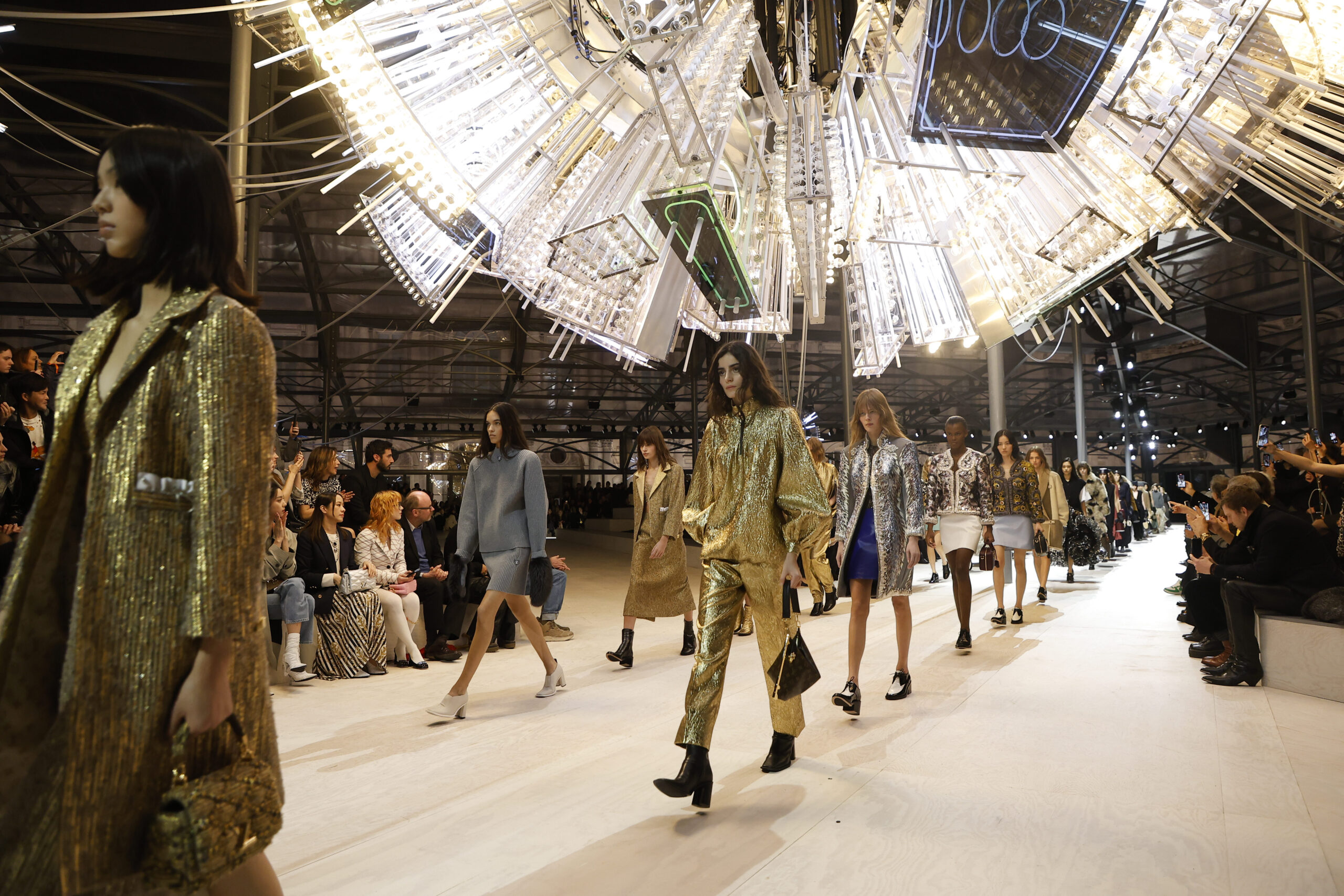World
Matilda Söderlund: Her Journey from World Cups to Questing up Yosemite Big Walls – Gripped Magazine

It’s pouring rain in Mariposa, a small mountain community west of Yosemite. Matilda Söderlund and her fiancé, William Hamilton, are visiting, and we’re discussing all things climbing. As Hamilton flips through my collection of coffee-table climbing books—The Stone Masters: California Rock Climbers in the Seventies and The Valley Climbers: Yosemite’s Vertical Revolution—I ask Söderlund if I can turn on my recorder and have her share her climbing story.
I pull some peach muffins out of the oven and place them in front of them. Söderlund begins sharing stories from her early days climbing indoors to eventually starting her climbing gym, Moumo, in her hometown of Stockholm, Sweden.
She describes her journey from indoor climbing to outdoor objectives, the drive that took her to the finals at World Cup events, and her achievement as the first—and so far, only—Swedish woman to climb 9a. She also reflects on her close bond with her dad and her goal to free a big project in Yosemite this season.
I asked her to start at the beginning, with her first day on the climbing gym wall, and what made climbing click for her.
“I started climbing at a birthday party when I was 11 years old, and I had no reference to climbing whatsoever before that,” she says. “Climbing was a really small and obscure activity in Sweden and Stockholm. I remember that I really enjoyed it, and I felt like something just clicked when I was on the wall. That Christmas, I asked for a harness and climbing shoes. I loved climbing, but I didn’t yet realize how much more there was to it.”
With a background in track and field, Söderlund was competitive long before she ever roped in. “I was very much into sports and very, very competitive as a child,” she says. But climbing felt different. Although she knew nothing about the competitive side of it—the events, history, and evolving standards—she knew this was her sport. She soon gave up running and teamed up with her dad, who became her regular climbing partner. Four days a week, they were at the gym together. “My dad came along after my first experience climbing, and he was like, ‘Oh, this is really cool, really fun.’ It became our thing to do together. Without him, I would never be where I am today.”
She explains that safety standards were loose at the gym back then; it was unheard of to secure the lighter climber to the ground while belaying a much heavier person. She recounts how, while still in grade school, she would catch her dad’s top-rope falls, getting launched each time he fell. “We were learning as we went,” she says.
Within her first year of climbing, she entered a competition, and to her surprise, she made it to the finals of the Swedish Youth Championships in March 2004, finishing second in the kids category. By age 13, she had climbed her first 8a, and that same year, she placed seventh at the UIAA World Youth Championships in Imst, Austria.
“Sasha [DiGiulian] and I first met around 2006 at the Youth Championships,” she says. “I knew of her from magazines. We became close friends by 2012 and traveled together for competitions, sharing goals and pushing each other.”
Initially, Söderlund had no desire to climb outdoors, viewing it as more of an adventure than a sport. In Sweden, climbing areas are spread out across the country, offering a variety of rock types—from granite slabs and thin to hand-width cracks to gneiss in Stockholm’s archipelago and some sandstone. She also had little interest in trad climbing, which would come much later. At the time, she preferred bouldering, which she dabbled in at the gym, and sport climbing, which she gravitated toward. However, her perspective changed within a few years, and by age 14, she climbed her first 8a, I Have a Dream, at Sjötorpsberget near her hometown, nailing it on her second try.
For the next seven years, until she entered university, Söderlund competed fiercely and climbed steadily through the ranks of sport climbing. “I think with competitions, it got to a point where I wasn’t enjoying it anymore. I’d put so much pressure on myself, and it was like everything I did was performance-driven,” she reflects.
From 2007 to 2012, she worked under the guidance of her coach Carlos Cabrera. As her indoor skills improved, her outdoor performance followed suit. “My first 8c was Odd Fellows in Frankenjura in 2012. That year, I also flashed Friends Like You 8b+ in Frankenjura and Kalea Borroka 8b+ in Siurana. In 2013 I did my first 8c+, Pati noso,” she says. Despite her success, the intense dedication isolated her from the world around her, and she needed a break. “I needed to step back and reevaluate why I climbed,” she says.
“At around 19 or 20, I couldn’t see myself making it as a pro climber. I didn’t even know why I climbed anymore.” She decided to change gears and enrolled in the Stockholm School of Economics, where she studied business. After graduating, she worked as an investment banker. “That was the worst year of my life,” she admits.
A short time later, Söderlund reflects, “My dad got diagnosed with cancer, and he was told he only had a few months left to live. That really affected me, and I realized that climbing is my biggest passion in life. I didn’t really know what place I wanted climbing to have in my life, but I decided to build a career around it. I would rather do that than work in finance.”
We pause for a moment, and I imagine what it would be like to lose a close family member to illness. “I’m so sorry,” I say, “that must’ve been very difficult, losing your dad.”
William signals that it’s time for him and Söderlund to meet his crew downtown for Mexican food, so I put the microphone away.

After a long lunch with her crusher friends from Sweden and Scotland, during which I chugged down too many Mexican Cokes, we paid our checks and stepped outside. I asked Söderlund if we could continue the interview. Just then, the clouds parted, and rays of sunshine pierced through the sky and beamed onto the mountainous landscape. I asked her to stand in the light for a moment so I could grab a quick portrait with my phone, then turned the recorder back on.
“He lived,” she says, surprising me. She explains that after two heart attacks and a series of inconclusive blood tests, her dad—a doctor himself—checked himself into the hospital and insisted on staying until physicians could figure out what was wrong. “My way of coping was to keep climbing, like some sort of therapy. My dad wanted me to keep going, so I decided I would still try for my 9a goal.”
“My goal, and my vision,” she continues, “was to start a climbing gym and return to climbing. I just wanted to become as good as I could be. Running the gym and balancing my climbing goals has been challenging, but it’s rewarding to have something fully my own. The gym has kept me motivated and given me a stable place to train and help others.”
In 2019, she climbed her first 9a, The Elder Statesman—a bouldery, powerful line with small crimps and technical footwork that suited her strengths. The Elder Statesman is one of two 9a routes she has completed, the other being Niemisis, which she sent in September 2023. She’s also bouldered up to V13.
“A few days after I climbed my first 9a, I got a call from my dad, and they found a new treatment that apparently worked,” she says.
It turned out that her dad had a rare form of blood cancer, and, fortunately, a new treatment had just been discovered. Due to the protein buildup in his heart, which had caused his heart attacks, and the drugs he now has to take, he has low blood pressure and isn’t the athlete he once was. However, his condition is stable and improving. “Now it’s been five years, and his heart is hopefully recovering. He’s back to climbing a little bit, mostly bouldering. He comes to the gym a few times per week,” she says.
In 2021, Söderlund told Base Magazine that she wanted to master all climbing disciplines: bouldering, trad, multi-pitch, and big wall. “To be able to switch between all the different disciplines is inspiring,” she tells me.
In 2022, Sasha DiGiulian assembled a female team to climb the 5.14b big wall Rayu in northern Spain. She chose Brette Harrington, a trad and sport climbing superstar with whom she’d recently traveled to Makatea, French Polynesia, to bolt sport climbs over the beach. Joining them was her old friend Söderlund, whom she remembered from their days competing at World Cup events.
Though the hardest pitches on Rayu are protected by bolts, much of the route is a runout trad climb, protected by Totems and wires in brittle, sharp limestone. The team combined their skills to succeed as a group, with Harrington leading the more nerve-racking pitches while DiGiulian and Harrington both redpointed the 5.14b crux. Their achievement marked “the hardest wall done in the world by an all-female team,” as I wrote in a story for Red Bull.
“Climbing with women like Sasha and Brette has taught me so much. It’s motivating to see how each of us brings something different to the wall,” Söderlund tells me as the clouds split apart across the sky over the Sierra foothills.
During her visit to Yosemite this fall, Söderlund has been focused on refining her skills on Yosemite granite. In late October, she completed Peace (5.13+) on Medlicott Dome in Tuolumne Meadows, a route she calls “a journey.” She’s still here working on a big project she’d rather keep under wraps.
Söderlund says that climbing with Harrington has been an eye-opening experience. “It has raised my trad game a lot. Before Rayu, I had very little experience. There’s still so much to learn, even though I’ve been climbing for over 20 years.”










